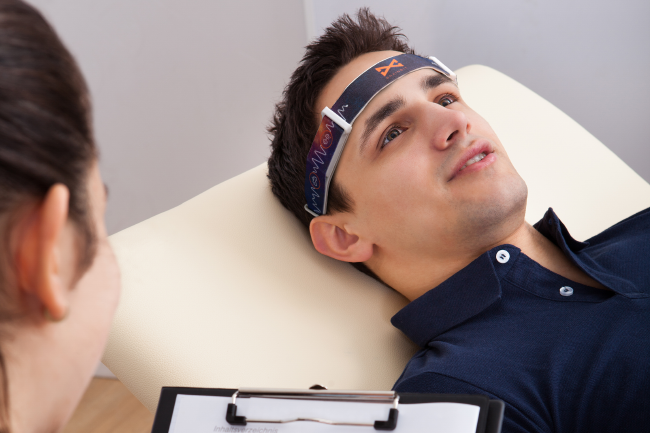BrainBit Blog
Neurofeedback for psychologists

Modern technologies and the Neurofeedback method in psychology allow anyone to acquire the skill of managing processes that occur in the body on the psychological level.
Neurofeedback: a use-case in therapy
1. Attention deficit disorder among school children.
Parents of a 9-year-old child asked a psychologist to help solve their daughter's problem with the lack of concentration in school and, as a result, poor performance at school. The specialist conducts a preliminary conversation with the child to explain and prepare for the upcoming biofeedback training. The first biofeedback session, as a rule, is «diagnostic», intending to determine the patient's maximum, at the moment, abilities, in the given case, the maximum attention span. Subsequent sessions are held to gradually increase this time and teach the child to independently remain focused for a certain necessary time.
Result: the course lasted 2.5 months, 3 sessions per week, the concentration of attention changed from 8 minutes to 36 minutes, the child's performance increased by 4 points (increased to 8 on the scale from 1 to 10), the atmosphere in the family improved significantly, the psycho-emotional state of the girl stabilized, the quality of sleep has considerably improved.
2. Treatment of phobias and fears.
A person that is scared of flying suffers from a phobic disorder. First you need to determine how serious a violation is and whether it is the true cause of the disorder. For this, for example, on a monitor screen, a person can be shown various photographs taken on board of an airplane or clips of air flights. At the same time, encephalogram indicators are recorded: their dynamics can determine the presence of phobia or the degree of disorder if any. The indicators are compared in a calm state (normal) and upon presentation of the test material. If there's a large gap in performance results, we can conclude that taking a flight for this person is not just an unpleasant situation, but a real phobia.
Further training begins. A person learns to control their emotional state first. After they learn to get into the state of rest and relaxation voluntarily, the main part of treatment begins. The patient must learn to be in a comfortable state, despite the constant presentation of stress stimuli. The severity of these incentives is constantly increasing. EEG indicators are also displayed on the monitor screen along with frightening images. A person sees changes in brain activity provoked by phobic stimuli and tries to maintain the state of comfort and peace that is already formed in him.
Result: training took place 2-3 times a week for 30 - 40 minutes for 3 months. The patient independently determined a method of combating phobia and a way to remain calm in a stressful situation.
3. Inability to concentrate and relax on time.
CEO of a large medical equipment manufacturer addresses a specialist to deal with the lack of ability to prioritize in solving a large number of issues and problems associated with the work process. The diagnostic stage of treatment showed that, due to constant stress, a person simply forgot how to "turn off" the brain when necessary, which resulted in chronic fatigue, insomnia, constant headache, irritability, and poor focus.
Result: the duration of the course is 1.5 months 4 times a week (every other day). Conducting biofeedback training in several stages of learning the skills of quickly entering a state of relaxation (alpha-training) and increasing concentration (beta-training) eliminates insomnia, significantly reduces irritability, and increases the concentration index by 2.5 times.
Specialized equipment for biofeedback training, which has no analogs: NeuroFit
What is it: this wireless neuro training device is a headband that records brain biorhythms on-line and allows psycho-emotional correction using a special biofeedback based software.
In combination with Biofeedback, BrainBit NeuroFit has been successfully used in psychology and modern cognitive behavioral therapy.
Biofeedback aims to help people learn better self-adjustment and self-control in shorter time, effectively, and without side-effects.

The electrodes on the headband are located in accordance with International 10-20 system. International 10–20 system is an internationally recognized method to describe and apply the location of scalp electrodes in the context of an EEG test. The «10» and «20» refer to the fact that the actual distances between adjacent electrodes are either 10% or 20% of the total front–back or right–left distance of the skull.
BrainBit NeuroFit is a wireless system and works via Bluetooth-interface. This performance of the system allows minimizing artifacts and eliminating movement restrictions during research and training that helps to work with children.
Learn more: BrainBit NeuroFit
Interested in demo? Let us know: info@brainbit.com
